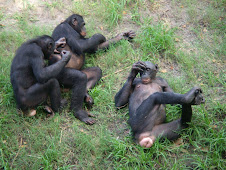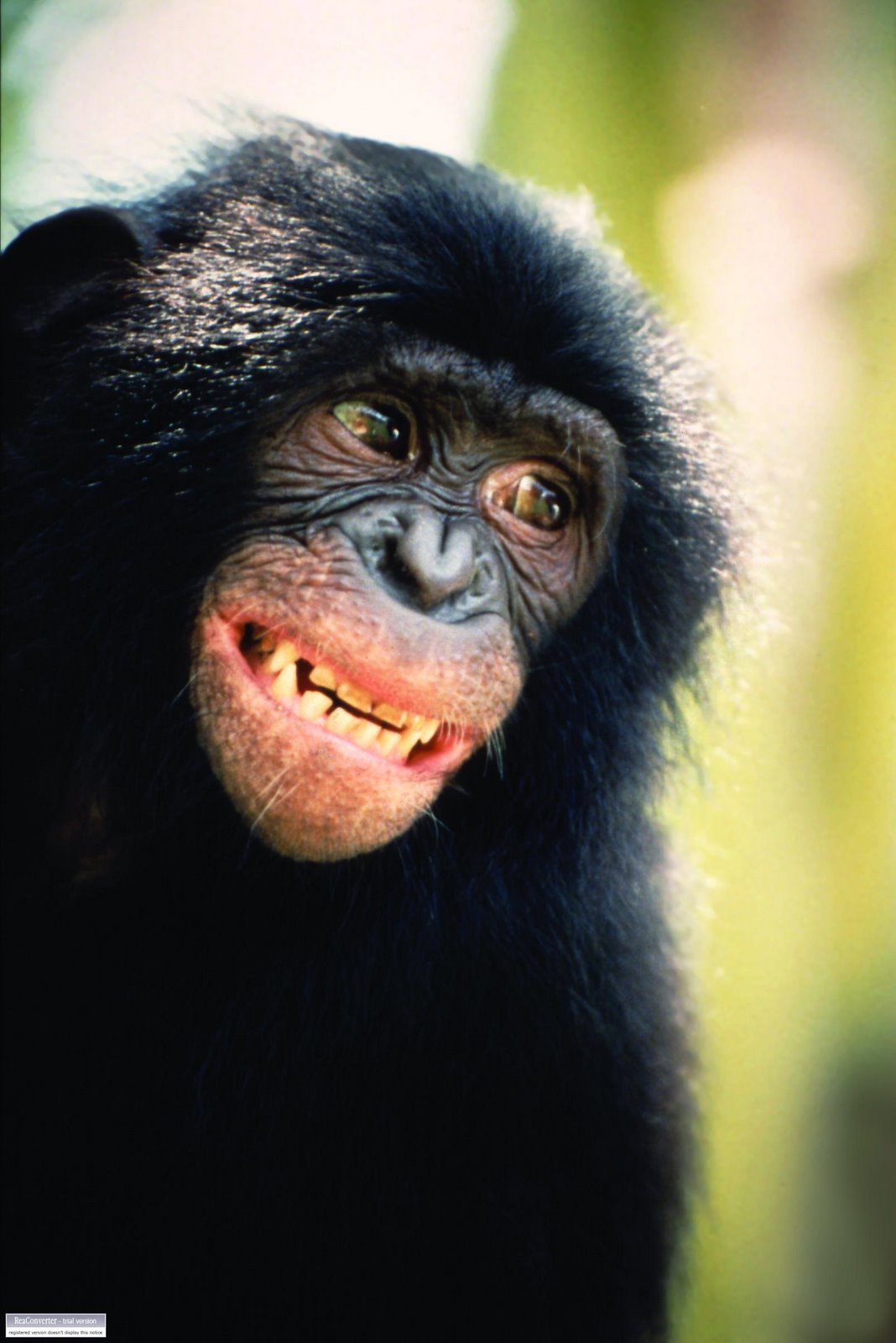

This old guidebook of Hagenbeck's Stellingrad dates from the mid-twenties, from the reopening of the zoo following WWI. The cover is a softly rendered watercolor, the middle photo is the "elephant gate" entrance, and the last one is of the African panorama, using hidden moats, invented by Hagenbeck.
A well-known professional zoo man and historian, Ken Kawata, recently visited landmarks of Carl Hagenbeck, one of the most influential zoo directors in modern times. Ken writes:
"Gentle rain kept falling, but the temperature was mild. For several days in late August 2008 I was a house guest of Herman Reichenbach, a noted zoo historian in Hamburg, Germany. I asked if he could give me a tour of historical sites related to Carl Hagenbeck, he gladly obliged and we were off to his birthplace. "It's a pity you weren't here a few years ago," he noted, adding that the house in which Carl had been born was run down and had to be demolished recently. There is a plaque on a building. This is where, in 1848, his fish-monger father, another Carl, began animal trading business.
"Nearby there is the former site of their menagerie in the heart of the famous red-light district. It did not appear that the current building was the original. The rain slowed down a bit, and we moved to the site of the Hagenbeck Tierpark (animal park) from 1874 to 1902. Actually it is a small lot (estimated to be 7,000 square meters, or roughly one and a half-acre) in a residential area, now occupied by a school and other buildings. This is where large mammals, such as elephants, giraffes and lions were kept, some of them performed, for nearly three decades before the opening of the legendary zoo in Stellingen. You can imagine how it was with the sounds of elephants trumpeting, lions roaring and the smell from the animals. These three locations are within an easy walking distance in a densely populated area, not far from the harbor.
"It was time to visit Carl Hagenbecks Tierpark, and we took a subway. When the zoo was in the planning stage, this area was a wide spread of potato patches in the outskirts of Hamburg. The zoo, opened in 1907, became a sensation with a revolutionary exhibit system; in fact Carl Hagenbeck left a profound influence in the twentieth century zoos, not only in the area of animal exhibitry but also in animal husbandry, not to mention the circus world and animal trade business. Herman and I walked through the new gate. After the recent redesigning the much-photographed elephant gate, which escaped the heavy bombing by the Allies, is now inside the park grounds.
"The statues of Carl Hagenbeck and his father still stand, as if talking to us in the now-steady rain. But I was anxious to take a view of the legendary African panorama which, fortunately, was not destroyed during WWII. The familiar image of the panorama from the old black-and-white photos changed a bit, as trees have masked the edges over the last century and a half. In this panorama, at the bottom level lies a flock of flamingos; up on the next level are the animals of the plains such as the zebra; lions, the predators of those animals, reside up on the next level and on the very top are mountain goats on the rocky hill. All these animals are separated from the viewing public by moats, dry or wet, but not by metal bars or wire mesh. The use of artificial rocks and plants to soften the reality of captivity is breath-taking. Moreover, the public walkways in all levels are skillfully hidden and you cannot see fellow visitors on other levels. The designer's tactful calculation of the sight line in this see-through, multi-moat exhibit is still remarkable. This is a shrine for anyone interested in zoo design or zoo history in general.
"Standing in front of the African panorama on that rainy afternoon, the oft-told story came to mind: Zoos around the world tried to copy the Hagenbeck-style design over the years, but the original still commands the supreme position. Today the Hagenbeck family is the king of the circus world no more, animal trading business has faded away world-wide, and zoos have made dramatic improvements in many areas internationally. However Carl Hagenbeck's legacy continues to impress upon those of us who can appreciate his position in history."
A little bit about Ken Kawata: recently, he retired as general curator of the Staten Island Zoo. Ken was born in 1937 in Japan and was mentored by the late Dr. Tadamichi Koga, Japan's "Mr. Zoo" and long-time director of Tokyo's Ueno Zoo. Ken came to America under the wing of Gary Clarke, director of the Topeka, Kansas Zoo. He went on to work at Tulsa, Indianapolis, Milwaukee, Detroit, and finally, the Staten Island Zoo.
A well-known professional zoo man and historian, Ken Kawata, recently visited landmarks of Carl Hagenbeck, one of the most influential zoo directors in modern times. Ken writes:
"Gentle rain kept falling, but the temperature was mild. For several days in late August 2008 I was a house guest of Herman Reichenbach, a noted zoo historian in Hamburg, Germany. I asked if he could give me a tour of historical sites related to Carl Hagenbeck, he gladly obliged and we were off to his birthplace. "It's a pity you weren't here a few years ago," he noted, adding that the house in which Carl had been born was run down and had to be demolished recently. There is a plaque on a building. This is where, in 1848, his fish-monger father, another Carl, began animal trading business.
"Nearby there is the former site of their menagerie in the heart of the famous red-light district. It did not appear that the current building was the original. The rain slowed down a bit, and we moved to the site of the Hagenbeck Tierpark (animal park) from 1874 to 1902. Actually it is a small lot (estimated to be 7,000 square meters, or roughly one and a half-acre) in a residential area, now occupied by a school and other buildings. This is where large mammals, such as elephants, giraffes and lions were kept, some of them performed, for nearly three decades before the opening of the legendary zoo in Stellingen. You can imagine how it was with the sounds of elephants trumpeting, lions roaring and the smell from the animals. These three locations are within an easy walking distance in a densely populated area, not far from the harbor.
"It was time to visit Carl Hagenbecks Tierpark, and we took a subway. When the zoo was in the planning stage, this area was a wide spread of potato patches in the outskirts of Hamburg. The zoo, opened in 1907, became a sensation with a revolutionary exhibit system; in fact Carl Hagenbeck left a profound influence in the twentieth century zoos, not only in the area of animal exhibitry but also in animal husbandry, not to mention the circus world and animal trade business. Herman and I walked through the new gate. After the recent redesigning the much-photographed elephant gate, which escaped the heavy bombing by the Allies, is now inside the park grounds.
"The statues of Carl Hagenbeck and his father still stand, as if talking to us in the now-steady rain. But I was anxious to take a view of the legendary African panorama which, fortunately, was not destroyed during WWII. The familiar image of the panorama from the old black-and-white photos changed a bit, as trees have masked the edges over the last century and a half. In this panorama, at the bottom level lies a flock of flamingos; up on the next level are the animals of the plains such as the zebra; lions, the predators of those animals, reside up on the next level and on the very top are mountain goats on the rocky hill. All these animals are separated from the viewing public by moats, dry or wet, but not by metal bars or wire mesh. The use of artificial rocks and plants to soften the reality of captivity is breath-taking. Moreover, the public walkways in all levels are skillfully hidden and you cannot see fellow visitors on other levels. The designer's tactful calculation of the sight line in this see-through, multi-moat exhibit is still remarkable. This is a shrine for anyone interested in zoo design or zoo history in general.
"Standing in front of the African panorama on that rainy afternoon, the oft-told story came to mind: Zoos around the world tried to copy the Hagenbeck-style design over the years, but the original still commands the supreme position. Today the Hagenbeck family is the king of the circus world no more, animal trading business has faded away world-wide, and zoos have made dramatic improvements in many areas internationally. However Carl Hagenbeck's legacy continues to impress upon those of us who can appreciate his position in history."
A little bit about Ken Kawata: recently, he retired as general curator of the Staten Island Zoo. Ken was born in 1937 in Japan and was mentored by the late Dr. Tadamichi Koga, Japan's "Mr. Zoo" and long-time director of Tokyo's Ueno Zoo. Ken came to America under the wing of Gary Clarke, director of the Topeka, Kansas Zoo. He went on to work at Tulsa, Indianapolis, Milwaukee, Detroit, and finally, the Staten Island Zoo.













No comments:
Post a Comment